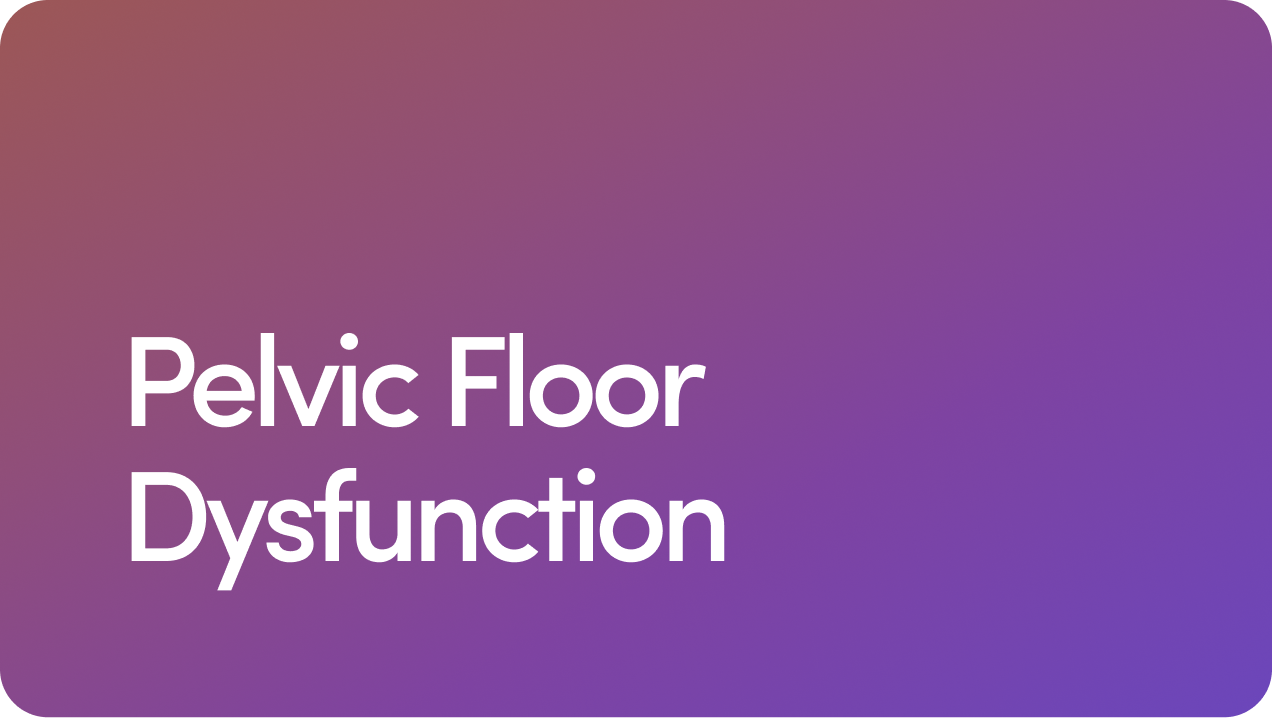Content
Be ready for sex whenever you're in the mood
Botox for ED: Does It Work?

Botox® is well-known for smoothing out facial wrinkles and preventing migraine attacks, but could it also hold the secret to enhancing your erections?
Some proponents say Botox may improve erectile dysfunction (ED) by relaxing the smooth muscles in the penis and enhancing blood flow. But using Botox for ED is still relatively new and experimental.
Keep reading to learn how well Botox works as an ED treatment, the side effects you should know about, and other proven therapies to consider.
Content
What Is Botox?
Botox (AKA botulinum toxin injection) is a popular cosmetic treatment that smooths and prevents wrinkle lines.
It’s made from a bacterium called Clostridium botulinum and works by blocking acetylcholine, a neurotransmitter involved in muscle contraction.
Of the seven types of botulinum neurotoxins, only botulinum toxin A and B are used in medical and cosmetic treatments.
Botox for ED: How Does It Work?
Botox may help with erectile dysfunction by relaxing the smooth muscles in the blood vessels of the penis, improving blood flow — a crucial ingredient for getting and maintaining erections.
In addition to blocking acetylcholine, Botox also suppresses norepinephrine and stimulates cyclic adenosine monophosphate. Studies show norepinephrine levels increase during sexual arousal in men with ED. Other research suggests adenosine acts as a vasodilator to promote smooth muscle relaxation.
According to the American Urological Association, Botox’s effects are similar to those of phosphodiesterase type 5 inhibitors (PDE5 inhibitors), like Viagra® or Cialis®, rather than intracavernosal injection therapies like TriMix.
How Effective is Botox for ED?
Research on the efficacy of Botox for ED is limited but promising. While some research has shown beneficial effects in some men, more research needs to be done. And Botox is currently not an FDA-approved treatment for erectile dysfunction.
Botox Outperforms Placebo
A six-month randomized controlled trial involving 176 patients compared Botox to a placebo for sexual performance. Participants were divided into three groups: one received 100 units of Botox, another 50 units, and the third a placebo.
Both Botox groups saw significant improvements in sexual performance and erection quality, with results peaking around the third month. By month six, the 100-unit dose proved more effective than 50 units, while the placebo group showed little change. Botox patients also experienced an increase in penile length.
Botox Can Work as an Add-On Therapy
A 2019 study examined botulinum toxin as an add-on therapy for people who don’t respond to standard ED treatments like PDE5 inhibitors or prostaglandin E1 injections.
Fifty-four percent of patients saw improved erectile function when Dysport® — a product similar to Botox — was added to their treatment.
Researchers also found that Botox injections directly into the penis (intra-cavernous) worked best for milder cases of ED.
Botox Shows Promise As a Long-Term Treatment
Another study examined the long-term effects of Botox for ED, combined with either PDE5 inhibitors or prostaglandin E1 injections.
Of 216 men, around 43 percent requested at least a second injection. Researchers reported that 77.5 percent responded positively, with even better outcomes after repeat injections. This suggests Botox could provide lasting benefits over time.
Botox Treatment May Improve Other Penile Problems
Botox might also do more than help with ED — it could also improve sexual health in surprising ways.
A 2018 case study outlines its potential to treat priapism, a condition causing prolonged, painful erections due to trapped blood in the penis.
In this case, a 31-year-old man had been managing his priapism with cyproterone acetate, but the medication led to frustrating side effects like ED, low libido, and pelvic pain.
Switching to Botox injections helped prevent future episodes and eliminated those unwanted side effects.
Research is also ongoing into Botox for scrotal tightness and pain, penile enlargement, and penile retraction.
Botox for ED Cost
Botox isn’t FDA-approved for erectile dysfunction and may not be covered by your insurance.
Costs can go as high as $15,000, but pricing varies widely from clinic to clinic and depends on factors like dosage and provider expertise.
Penile Botox Side Effects
Similar to Botox injections in other parts of the body, an intra-cavernous injection of Botox can cause side effects. Side effects of Botox injections in general include:
Bruising and pain at the injection site
Redness
Headaches
Flu-like symptoms
Nausea
If the toxin spreads beyond the treatment area, it can cause other symptoms.
While the research looks promising so far, there’s still a lot we don’t know about the safety and efficacy of Botox for ED. It simply hasn’t been studied and used as much as other ED treatments.
Until it is, consider these proven ED treatments:
Oral medication. These medications include Viagra (sildenafil), Cialis (tadalafil), and chewable ED medication like Hims Hard Mints.
Therapy. Sex therapy, couples therapy, or individual therapy can help with many cases of ED, especially in younger men.
Vacuum erection devices. These devices pull blood into the tissues inside your penis to help you maintain an erection. You can often use them with a penis ring.
Testosterone replacement therapy. If the root of your ED is low testosterone, testosterone replacement therapy (TRT) may help you have better erections again.
Shockwave therapy. Shockwave therapy uses low-intensity shockwaves to target tissues near and in the penis to encourage better blood flow.
Lifestyle changes. Healthy lifestyle habits like proper nutrition, adequate sleep, regular exercise, and lowered stress levels may help improve your erectile function.
Before you commit to Botox for ED, be sure to follow up with a healthcare provider specializing in urology or men’s health. They can give you the rundown on potential risks, benefits, and alternative therapies.
Here’s what we know about using Botox for erectile dysfunction:
Botox shows potential, but it’s experimental. Research suggests Botox may improve erectile dysfunction by relaxing smooth muscles and enhancing blood flow, similar to PDE5 inhibitors. But it’s still an experimental treatment, with limited studies supporting its efficacy and safety.
Studies so far show promising results. Clinical trials suggest Botox can improve erection quality, particularly as an add-on therapy for those unresponsive to standard treatments. Long-term studies show some patients benefit from repeat injections, and Botox may also help address other issues like priapism.
Proven ED treatments first should be your go-to. Botox for ED doesn’t have FDA approval and can be costly, with potential side effects. Proven treatments like oral medications, therapy, and lifestyle changes are likely the best options to try first for addressing ED symptoms.
Have questions about treating ED? Reach out to a healthcare provider to get a recommendation.
10 Sources
- Becker AR, et al. (2002). Cavernous and systemic plasma levels of norepinephrine and epinephrine during different penile conditions in healthy men and patients with erectile dysfunction. https://www.goldjournal.net/article/S0090-4295(01)01521-7/abstract
- El-Shaer WA, et al. (2021). Intra-cavernous injection of BOTOX® (50 and 100 Units) for treatment of vasculogenic erectile dysfunction: Randomized controlled trial. https://onlinelibrary.wiley.com/doi/10.1111/andr.13010
- Giuliano FR, et al. (2019). Safety and efficacy of intracavernosal injections of abobotulinumtoxinA (Dysport®) as add on therapy to phosphosdiesterase type 5 inhibitors or prostaglandin E1 for erectile dysfunction-Case studies. https://pubmed.ncbi.nlm.nih.gov/31117236/
- Giuliano FR, et al. (2023). Safety and effectiveness of repeated botulinum toxin A intracavernosal injections in men with erectile dysfunction unresponsive to approved pharmacological treatments: Real-world observational data. https://www.mdpi.com/2072-6651/15/6/382
- Reichel G, et al. (2018). [Prophylaxis of recurring low-flow priapism: Experimental botulinum neurotoxin injection into the ischiocavernosus muscle]. https://pubmed.ncbi.nlm.nih.gov/29071397/
- Satriyasa BA. (2019). Botulinum toxin (Botox) A for reducing the appearance of facial wrinkles: A literature review of clinical use and pharmacological aspect. https://pmc.ncbi.nlm.nih.gov/articles/PMC6489637/
- Trost LA. (2022). Botulinum toxin therapy for erectile dysfunction: Is there a rationale?.
- https://auanews.net/issues/articles/2022/april-2022/botulinum-toxin-therapy-for-erectile-dysfunction-is-there-a-rationale
- Wen JI, et al. (2012). Adenosine signaling: Good or bad in erectile function?. https://pubmed.ncbi.nlm.nih.gov/22423035/
- What are the risks of botulinum toxin injections? (n.d.). https://www.plasticsurgery.org/cosmetic-procedures/botulinum-toxin/safety
Editorial Standards
Hims & Hers has strict sourcing guidelines to ensure our content is accurate and current. We rely on peer-reviewed studies, academic research institutions, and medical associations. We strive to use primary sources and refrain from using tertiary references. See a mistake? Let us know at [email protected]!
This article is for informational purposes only and does not constitute medical advice. The information contained herein is not a substitute for and should never be relied upon for professional medical advice. Always talk to your doctor about the risks and benefits of any treatment. Learn more about our editorial standards here.
Mike Bohl, MD
Education
Bachelor of Arts, Egyptian and Ancient Western Asian Archaeology - Brown University | College, 2011
Doctor of Medicine - Brown University | Warren Alpert Medical School, 2017
Master of Public Health - Columbia University | Mailman School of Public Health, 2018
Master of Liberal Arts, Journalism - Harvard University | Harvard Extension School, 2022
Master of Science, Healthcare Leadership - Cornell University | Weill Cornell Graduate School of Medical Sciences, 2024
Master of Business Administration - Cornell University | Samuel Curtis Johnson Graduate School of Management, 2024
Training
Internship - NYU Grossman School of Medicine | Internal Medicine Residency—Community Health Track, 2019
Medical License
New York, 2019
Certificates & Certifications
Certified in Public Health - National Board of Public Health Examiners, 2018
Medical Writer Certified - American Medical Writers Association, 2020
Editor in the Life Sciences - Board of Editors in the Life Sciences, 2020
Certified Personal Trainer - National Academy of Sports Medicine, 2022
Certified Nutrition Coach - National Academy of Sports Medicine, 2023
Board Certified Medical Affairs Specialist - Accreditation Council for Medical Affairs, 2023
Certificate of Advanced Education in Obesity Medicine - Obesity Medicine Association, 2025
Regulatory Affairs Certification - Regulatory Affairs Professionals Society, 2025
Affiliations & Memberships
Specialties & Areas of Focus
General Practice
Previous Work Experience
Medical Expert Board Member - Eat This, Not That!, 2021–
Director Scientific & Medical Content - Stealth Biotech PBC, 2023–2024
Director, Medical Content & Education - Ro, 2021–2023
Associate Director, Medical Content & Education - Ro, 2020–2021
Senior Medical Writer - Ro, 2019–2020
Medical Editor/Writer - Sharecare, 2017–2020
Medical Student Producer - The Dr. Oz Show, 2015–2016
Research Affiliate - University Hospitals of Cleveland, 2013–2014
Publications & Research
Title: Biomechanical evaluation of a novel suturing scheme for grafting load-bearing collagen scaffolds for rotator cuff repair
Published in: Clinical Biomechanics
Date: 2015
URL: https://www.clinbiomech.com/article/S0268-0033(15)00143-6/abstract
Title: Pelvic incidence and acetabular version in slipped capital femoral epiphysis
Published in: Journal of Pediatric Orthopaedics
Date: 2015
Title: Relationship between pelvic incidence and osteoarthritis of the hip
Published in: Bone & Joint Research
Date: 2016
URL: https://boneandjoint.org.uk/Article/10.1302/2046-3758.52.2000552
Title: Effects of PDGF-BB delivery from heparinized collagen sutures on the healing of lacerated chicken flexor tendon in vivo
Published in: Acta Biomaterialia
Date: 2017
URL: https://www.sciencedirect.com/science/article/pii/S1742706117305652
Media Mentions & Features
Dr. Bohl’s medical expertise is regularly featured in consumer health media:
Eat This, Not That!: Contributor and Medical Expert Board Member on nutrition and wellness topics
The Dr. Oz Show: Behind-the-scenes contributor to Emmy Award-winning health segments
Sharecare: Public-facing health writer, simplifying complex medical issues for millions of readers
Why I Practice Medicine
Dr. Bohl developed a passion for medical content while working at The Dr. Oz Show. He realized that, through the media, he could bring important health information to the lives of many more people than he would be able to working in a doctor’s office.
Hobbies & Interests
Biking, resistance training, sailing, scuba diving, skiing, tennis, and traveling
Related Articles
Related Conditions
 Erectile Dysfunction
Erectile Dysfunction
 Premature Ejaculation
Premature Ejaculation
 Low Testosterone
Low Testosterone
 Retrograde Ejaculation
Retrograde Ejaculation
 Pelvic Floor Dysfunction
Pelvic Floor Dysfunction
 Anorgasmia
Anorgasmia